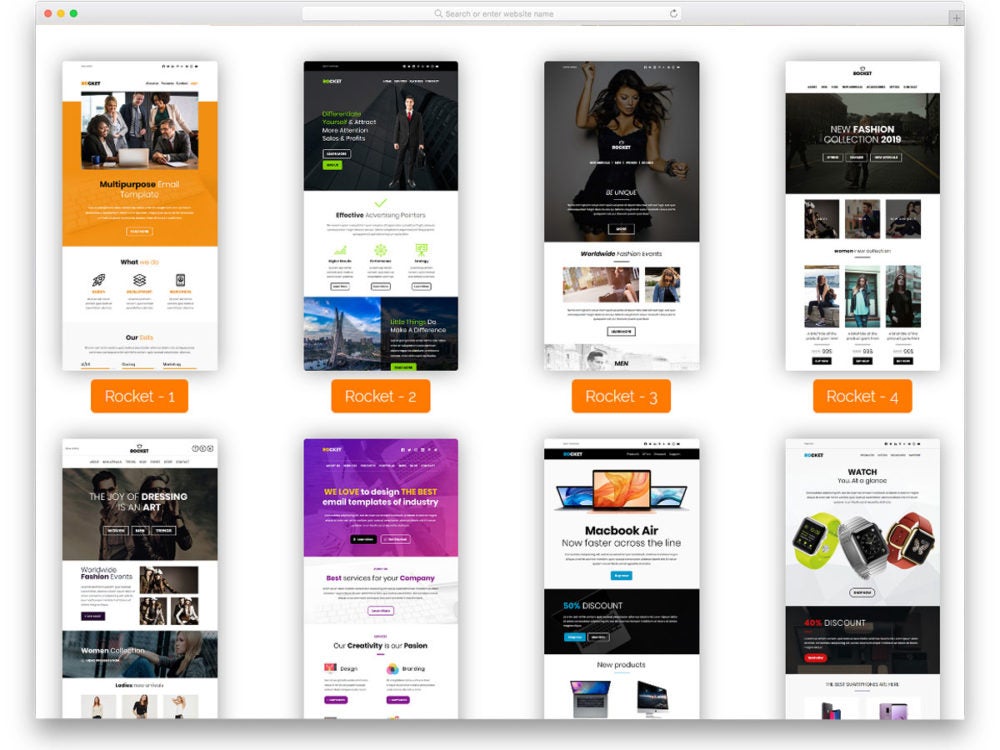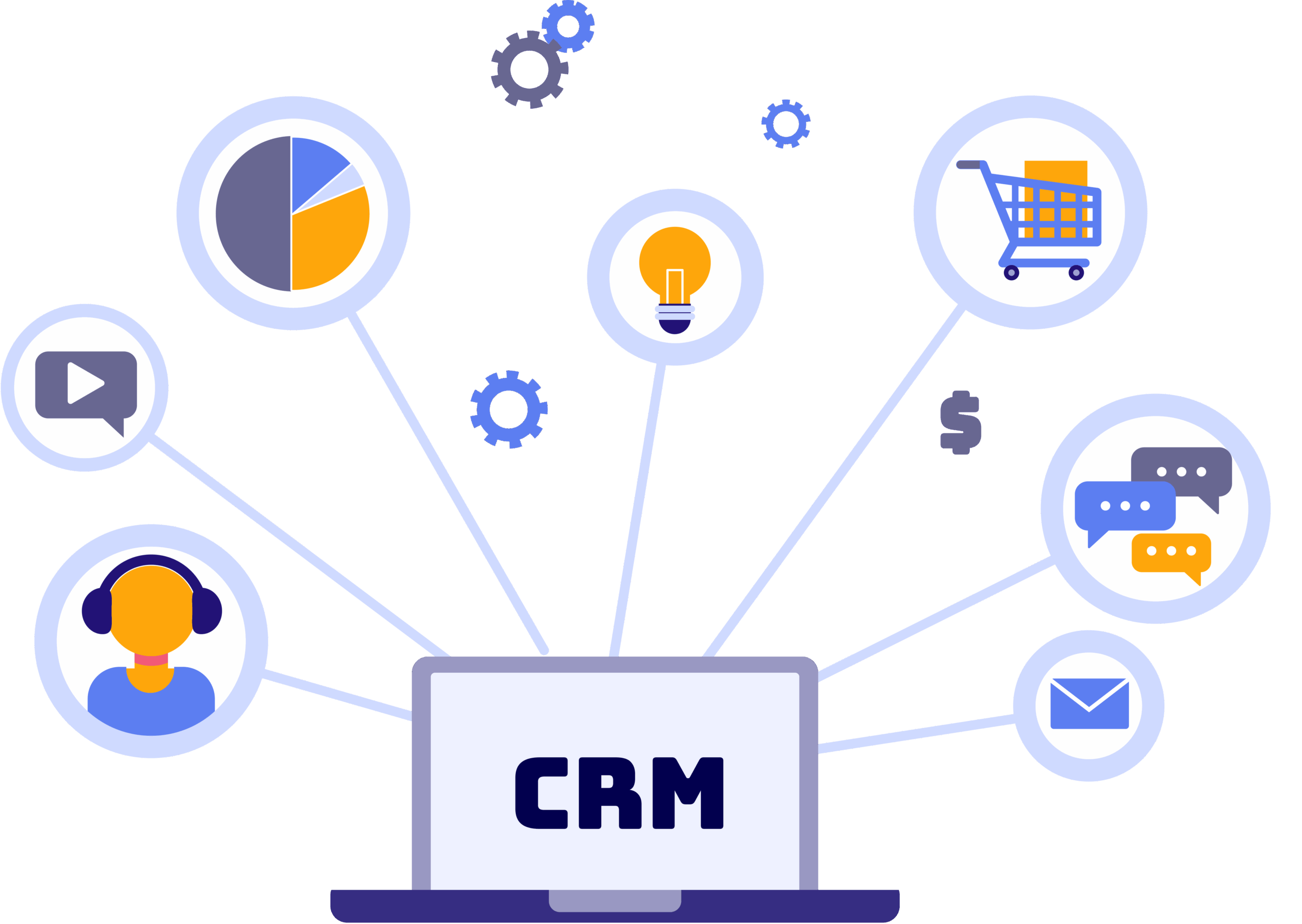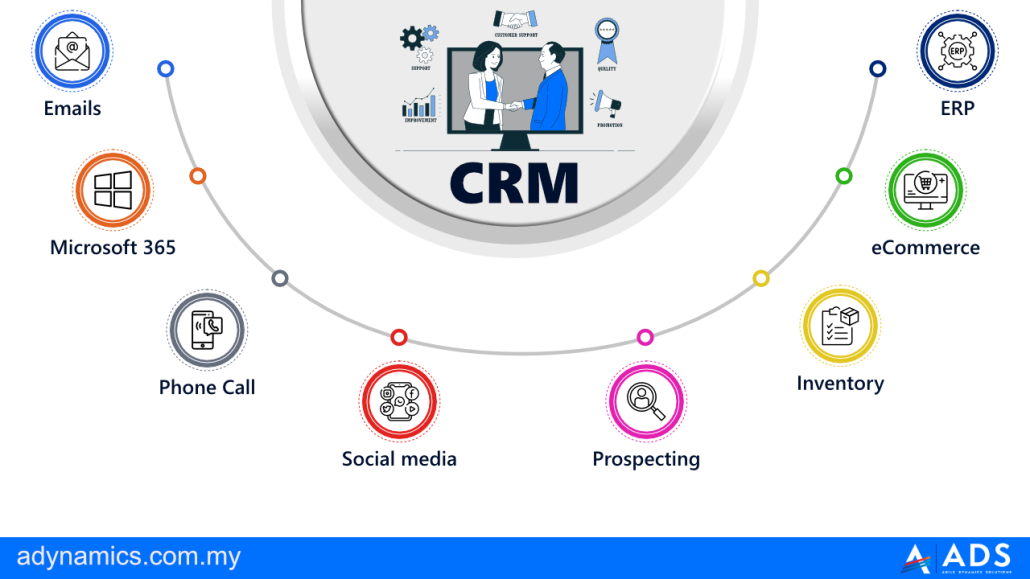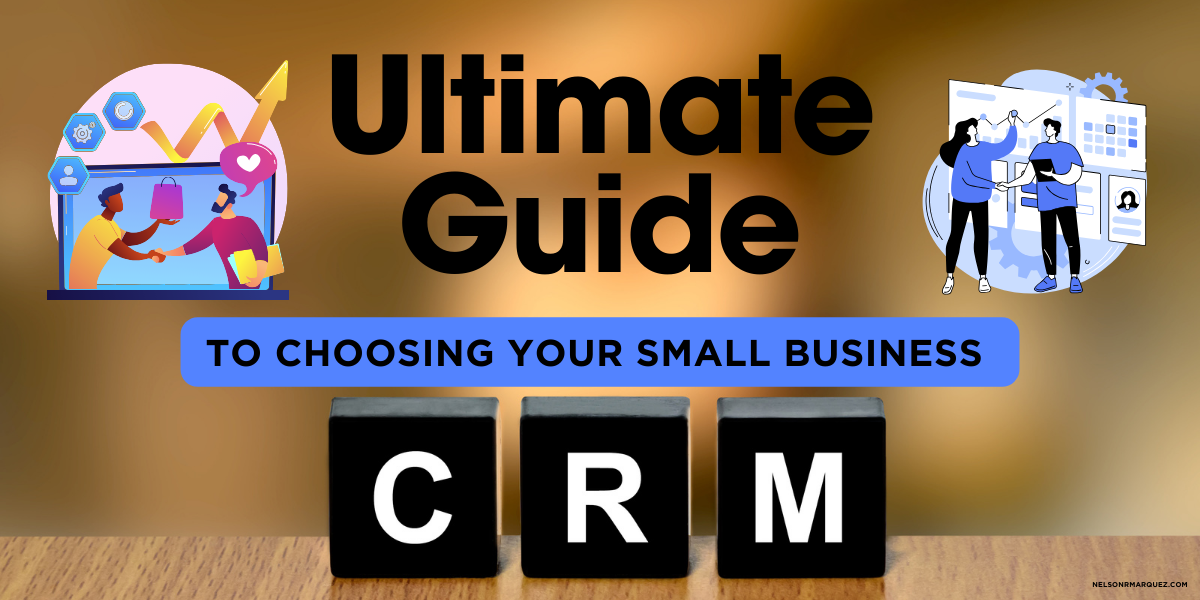
Supercharge Your CRM Marketing with Email Templates: A Comprehensive Guide
In the dynamic world of customer relationship management (CRM), email marketing remains a cornerstone for nurturing leads, driving conversions, and fostering lasting customer relationships. But crafting effective emails from scratch can be time-consuming and challenging. That’s where CRM marketing email templates come in. They’re your secret weapon for streamlining your email campaigns, ensuring consistency, and maximizing your marketing impact. This comprehensive guide delves into the world of CRM marketing email templates, providing you with everything you need to know to create, implement, and optimize them for success.
What are CRM Marketing Email Templates?
At their core, CRM marketing email templates are pre-designed email layouts and content structures that you can adapt and personalize for various marketing purposes. They act as a starting point, saving you the effort of building emails from the ground up each time you need to communicate with your audience. These templates typically include:
- Pre-written content: Subject lines, body text, and calls-to-action (CTAs) that you can customize.
- Design elements: Layouts, branding elements (logos, colors, fonts), and image placeholders.
- Segmentation capabilities: Designed to target specific customer segments based on their behavior, demographics, or purchase history.
The beauty of templates lies in their versatility. You can use them for a wide range of marketing activities, including:
- Welcome emails: Introduce new subscribers to your brand.
- Lead nurturing campaigns: Guide potential customers through the sales funnel.
- Promotional emails: Announce new products, special offers, or sales.
- Transactional emails: Confirm orders, provide shipping updates, or send password resets.
- Customer retention emails: Encourage repeat purchases and build loyalty.
Benefits of Using CRM Marketing Email Templates
Why bother with templates? The advantages are numerous, impacting your efficiency, consistency, and ultimately, your bottom line. Let’s explore the key benefits:
1. Saves Time and Effort
Creating emails from scratch takes time. You need to brainstorm content, design the layout, and code the email. Templates eliminate this process, allowing you to quickly adapt pre-designed emails to your specific needs. This frees up valuable time for other critical marketing tasks, such as strategy development, data analysis, and campaign optimization.
2. Ensures Consistency and Branding
Consistency is key to building brand recognition and trust. Templates help you maintain a consistent look and feel across all your email communications. By using pre-designed layouts and branding elements, you ensure that your emails align with your brand guidelines, reinforcing your brand identity and making your emails instantly recognizable.
3. Improves Email Deliverability
Well-designed templates often incorporate best practices for email deliverability. This includes using clean code, avoiding spam trigger words, and optimizing images. By using templates, you can reduce the risk of your emails being marked as spam and improve your chances of reaching your subscribers’ inboxes.
4. Enhances Personalization
CRM systems allow you to personalize your email templates with dynamic content, such as the recipient’s name, purchase history, or interests. This level of personalization makes your emails more relevant and engaging, increasing the likelihood that your subscribers will open, read, and click on your emails.
5. Boosts Conversions
Effective email templates are designed to drive conversions. They include compelling calls-to-action, persuasive copy, and visually appealing layouts that encourage subscribers to take the desired action, whether it’s making a purchase, signing up for a webinar, or downloading a resource. With the right template, you can significantly boost your conversion rates.
6. Increases Efficiency and Productivity
Templates streamline your workflow, allowing you to create and send emails more efficiently. This increased efficiency translates into higher productivity, as your marketing team can accomplish more in less time. With more time on their hands, your team can focus on analyzing results, refining strategies, and exploring new marketing opportunities.
7. Provides Data and Analytics
Most CRM systems provide robust data and analytics, allowing you to track the performance of your email templates. You can monitor open rates, click-through rates, conversion rates, and other key metrics to measure the success of your campaigns. This data allows you to identify what’s working and what’s not, enabling you to optimize your templates for better results.
Types of CRM Marketing Email Templates
The world of CRM marketing email templates is diverse, catering to a wide range of marketing needs. Here’s a breakdown of the most common types:
1. Welcome Email Templates
Welcome emails are your first impression. They greet new subscribers, introduce your brand, and set the stage for future communication. These templates should be friendly, informative, and include a clear call-to-action, such as encouraging subscribers to explore your website or follow you on social media.
2. Lead Nurturing Email Templates
Lead nurturing emails guide potential customers through the sales funnel, providing them with valuable information and building trust. These templates often include educational content, case studies, and product demos. The goal is to keep leads engaged and move them closer to making a purchase.
3. Promotional Email Templates
Promotional emails announce new products, special offers, or sales. These templates should be visually appealing, with clear messaging and a strong call-to-action. Consider using high-quality images, compelling copy, and a sense of urgency to drive conversions.
4. Transactional Email Templates
Transactional emails are triggered by specific customer actions, such as making a purchase or resetting a password. These templates should be informative, professional, and include relevant details, such as order confirmations, shipping updates, or account notifications.
5. Customer Retention Email Templates
Customer retention emails aim to build loyalty and encourage repeat purchases. These templates often include thank-you messages, exclusive offers, or personalized recommendations. The goal is to keep customers engaged and feeling valued.
6. Newsletter Email Templates
Newsletters keep subscribers informed about your company’s latest news, products, and industry insights. These templates should be well-designed, with a clear layout and engaging content. Make sure your newsletter provides value to your subscribers.
7. Re-engagement Email Templates
Re-engagement emails target subscribers who haven’t interacted with your emails in a while. These templates often include a friendly reminder, a special offer, or a request for feedback. The goal is to re-engage inactive subscribers and encourage them to stay connected.
How to Create Effective CRM Marketing Email Templates
Creating effective email templates requires careful planning and execution. Here’s a step-by-step guide to help you create templates that deliver results:
1. Define Your Goals
Before you start designing your template, define your goals. What do you want to achieve with this email? Do you want to generate leads, drive sales, or build brand awareness? Your goals will guide your content, design, and call-to-action.
2. Know Your Audience
Understand your target audience. What are their needs, interests, and pain points? Tailor your content and design to resonate with your audience. This involves segmenting your list and personalizing your messages.
3. Choose the Right CRM System
Select a CRM system that offers robust email marketing capabilities. Consider features such as template creation, personalization options, segmentation, and analytics. Popular CRM systems include Salesforce, HubSpot, and Zoho CRM.
4. Design a Compelling Layout
Create a visually appealing and user-friendly layout. Use a clear and concise structure, with a logical flow of information. Use headings, subheadings, and bullet points to break up text and make it easy to read. Ensure your template is mobile-responsive.
5. Write Engaging Content
Craft compelling content that captures your audience’s attention. Write a clear and concise subject line, and use persuasive copy in your body text. Highlight the benefits of your products or services, and include a strong call-to-action.
6. Optimize for Mobile
Most people check their emails on their mobile devices. Make sure your templates are mobile-responsive, meaning they adapt to different screen sizes. Test your templates on various devices to ensure they look and function properly.
7. Personalize Your Emails
Personalization is key to engaging your audience. Use dynamic content to personalize your emails with the recipient’s name, purchase history, or interests. This makes your emails more relevant and increases the likelihood that they will open and read them.
8. Include a Clear Call-to-Action
Every email should have a clear call-to-action. Tell your subscribers what you want them to do, whether it’s making a purchase, signing up for a webinar, or downloading a resource. Make your call-to-action prominent and easy to click.
9. Test Your Templates
Before sending your emails to your entire list, test your templates. Send test emails to yourself and your colleagues to ensure they look and function properly. Check for any errors in your content, design, or links.
10. Analyze and Optimize
Track the performance of your email templates using your CRM system’s analytics. Monitor open rates, click-through rates, conversion rates, and other key metrics. Use this data to identify what’s working and what’s not, and make adjustments to your templates to improve their performance.
Best Practices for CRM Marketing Email Templates
To maximize the effectiveness of your CRM marketing email templates, follow these best practices:
1. Keep it Simple
Avoid clutter and distractions. Use a clean and concise design, with a clear message and a single call-to-action. Don’t overwhelm your subscribers with too much information.
2. Use High-Quality Images
Images can make your emails more visually appealing and engaging. Use high-quality images that are relevant to your content. Optimize your images for web use to ensure they load quickly.
3. Write a Compelling Subject Line
Your subject line is the first thing your subscribers see. It needs to be attention-grabbing and relevant to the content of your email. Use strong verbs, and avoid spam trigger words.
4. Personalize Your Emails
Personalization makes your emails more relevant and increases engagement. Use the recipient’s name, purchase history, or interests to tailor your messages.
5. Segment Your Audience
Segment your audience based on their demographics, behavior, or purchase history. This allows you to send targeted emails that are more relevant to their needs and interests.
6. Optimize for Mobile
Ensure your templates are mobile-responsive, so they look and function properly on all devices. Test your templates on various devices to ensure they are optimized for mobile.
7. Include a Clear Call-to-Action
Every email should have a clear call-to-action. Tell your subscribers what you want them to do, whether it’s making a purchase, signing up for a webinar, or downloading a resource. Make your call-to-action prominent and easy to click.
8. Adhere to Branding Guidelines
Maintain a consistent brand identity across all your email communications. Use your brand colors, fonts, and logo in your templates.
9. Comply with Email Regulations
Ensure your emails comply with all relevant email regulations, such as GDPR and CAN-SPAM. Include an unsubscribe link in every email.
10. A/B Test Your Templates
A/B testing allows you to compare different versions of your email templates to see which one performs best. Test different subject lines, content, designs, and calls-to-action. The results of the test will inform improvements to your templates.
Examples of Effective CRM Marketing Email Templates
Let’s look at some examples of effective CRM marketing email templates:
1. Welcome Email Example
Subject: Welcome to [Your Company]!
Body:
Hi [Name],
Welcome to the [Your Company] community! We’re thrilled to have you. In this email, you’ll find a quick overview of what to expect from us, including:
- Exclusive offers and discounts
- Latest product updates
- Tips and tricks to help you get the most out of our services
To get started, check out our latest offerings [link to your website].
Thanks again for joining us!
Sincerely,
The [Your Company] Team
2. Lead Nurturing Email Example
Subject: [Name], Learn How to [Solve a Problem]
Body:
Hi [Name],
We noticed you downloaded our ebook, [Ebook Title]. We hope you found it helpful!
In this email, we want to share a few more resources that might be of interest:
- [Link to blog post]
- [Link to case study]
- [Link to product demo]
Ready to take the next step? [Button: Schedule a Free Consultation]
Best regards,
The [Your Company] Team
3. Promotional Email Example
Subject: Don’t Miss Out! [Sale Name] is Here!
Body:
Hi [Name],
Get ready to save! Our [Sale Name] is now live! Enjoy [discount percentage]% off [product category]!
[Include a visually appealing image or banner showcasing the sale.]
Shop now and don’t miss out on these amazing deals! [Button: Shop Now]
This offer ends [date].
Happy shopping!
The [Your Company] Team
4. Transactional Email Example (Order Confirmation)
Subject: Your Order from [Your Company] is Confirmed!
Body:
Hi [Name],
Thank you for your order! We’re excited to get your items shipped to you.
Here’s a summary of your order:
- Order Number: [Order Number]
- Order Date: [Order Date]
- Items: [List of items]
- Total: [Total amount]
You can track your order here: [link to order tracking].
If you have any questions, please don’t hesitate to contact us.
Sincerely,
The [Your Company] Team
5. Customer Retention Email Example
Subject: We Miss You, [Name]!
Body:
Hi [Name],
It’s been a while since we’ve seen you! We wanted to reach out and see how you’re doing.
As a valued customer, we’d like to offer you [discount or special offer] as a thank you for your continued support.
[Include a visually appealing image or banner.]
Redeem your offer here: [link to offer]
We look forward to seeing you again soon!
Best regards,
The [Your Company] Team
Tools and Resources for CRM Marketing Email Templates
Several tools and resources can help you create and manage your CRM marketing email templates:
1. CRM Systems
Most CRM systems offer built-in email template builders. These builders typically allow you to create templates from scratch or customize pre-designed templates. Popular options include Salesforce, HubSpot, Zoho CRM, and Microsoft Dynamics 365.
2. Email Marketing Platforms
If your CRM system doesn’t offer robust email marketing features, consider using a dedicated email marketing platform, such as Mailchimp, Constant Contact, or Campaign Monitor. These platforms offer a wide range of email template designs, advanced personalization options, and detailed analytics.
3. Template Libraries
Several online resources offer pre-designed email templates. These libraries provide templates for various industries, marketing goals, and design styles. Some popular template libraries include:
- Stripo: A drag-and-drop email template builder with a large library of pre-designed templates.
- Really Good Emails: A curated gallery of email designs, showcasing best practices and inspiring examples.
- Email on Acid: A tool that helps you test your email templates across different email clients and devices.
4. Design Software
If you want to create custom email templates, you can use design software, such as Adobe Photoshop or Canva. These tools allow you to create visually appealing designs that you can then integrate into your email templates.
5. Email Marketing Experts
If you’re struggling to create effective email templates, consider hiring an email marketing expert. These professionals can help you with template design, content creation, and campaign optimization.
The Future of CRM Marketing Email Templates
The landscape of CRM marketing is constantly evolving. As technology advances, so too will the capabilities of email templates. Here are some trends to watch:
1. AI-Powered Personalization
Artificial intelligence (AI) is already playing a significant role in email marketing, and its impact will only grow. AI-powered tools can analyze customer data and automatically personalize email content, subject lines, and even send times, resulting in higher engagement and conversion rates.
2. Interactive Email Elements
Interactive email elements, such as polls, quizzes, and embedded videos, are becoming increasingly popular. These elements keep subscribers engaged and provide valuable insights into their preferences. As email technology evolves, expect to see even more interactive features.
3. Dynamic Content
Dynamic content allows you to display different content to different subscribers based on their individual characteristics. This level of personalization makes your emails more relevant and increases the likelihood that subscribers will take action.
4. Focus on Accessibility
Accessibility is becoming increasingly important in email marketing. Ensure your templates are designed to be accessible to people with disabilities. This includes using alternative text for images, providing sufficient color contrast, and ensuring your templates are compatible with screen readers.
5. Integration with Other Marketing Channels
Email marketing is no longer an isolated channel. Expect to see more integration between email marketing and other marketing channels, such as social media, SMS, and push notifications. This will allow you to create more cohesive and personalized customer experiences.
Conclusion
CRM marketing email templates are an indispensable tool for any marketer looking to streamline their email campaigns, build strong customer relationships, and drive conversions. By understanding the benefits, types, and best practices of email templates, you can create compelling emails that resonate with your audience and achieve your marketing goals.
Remember to define your goals, know your audience, and choose the right CRM system. Design a compelling layout, write engaging content, and personalize your emails. Test your templates, analyze your results, and make adjustments as needed. By following these guidelines, you can harness the power of CRM marketing email templates and unlock the full potential of your email marketing efforts.
Embrace the evolution of email marketing, stay informed about the latest trends, and adapt your strategies to meet the ever-changing needs of your audience. With a strategic approach to CRM marketing email templates, you can create a powerful engine for growth and success. So, get started today, and watch your email marketing campaigns thrive!


